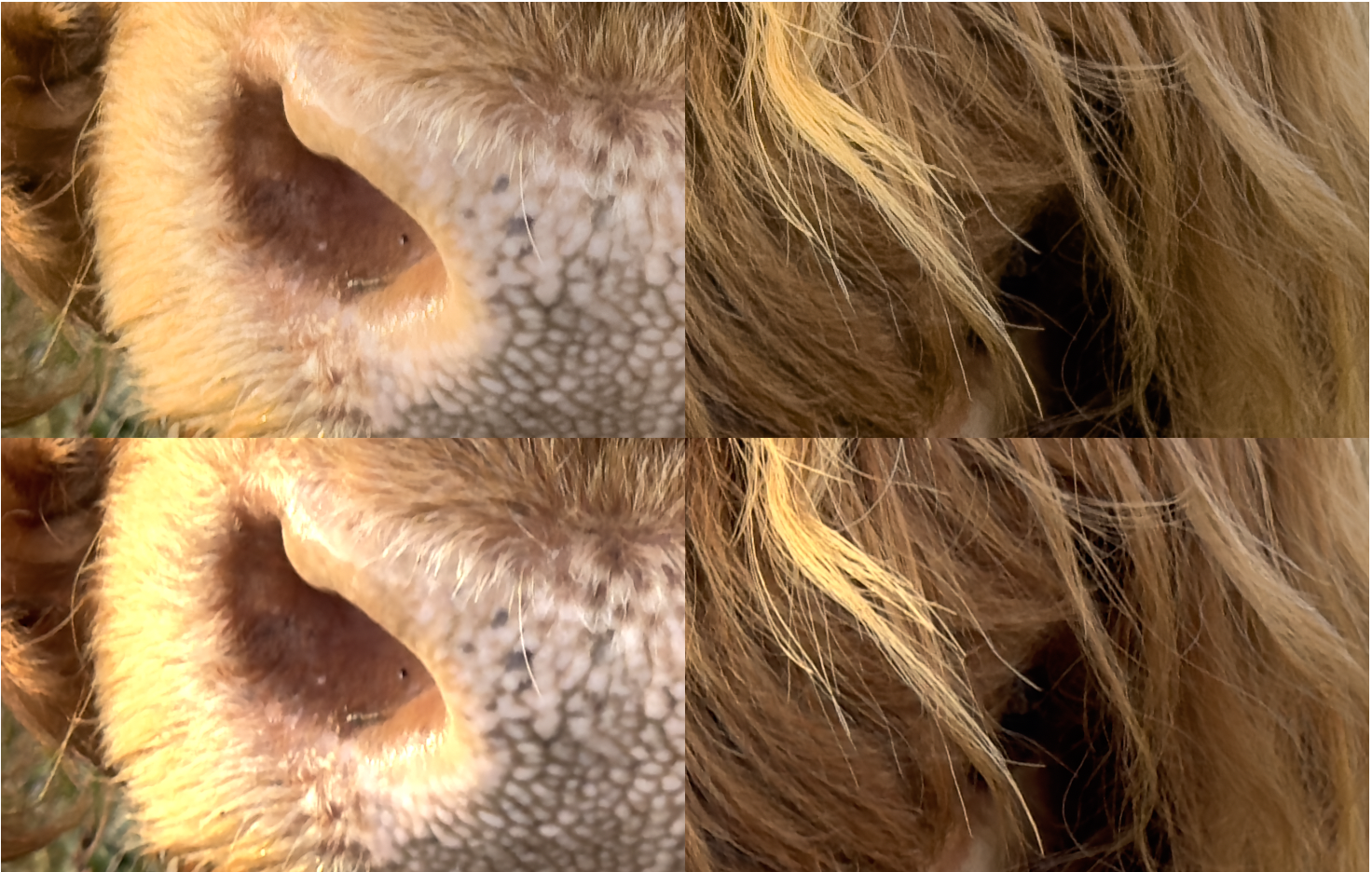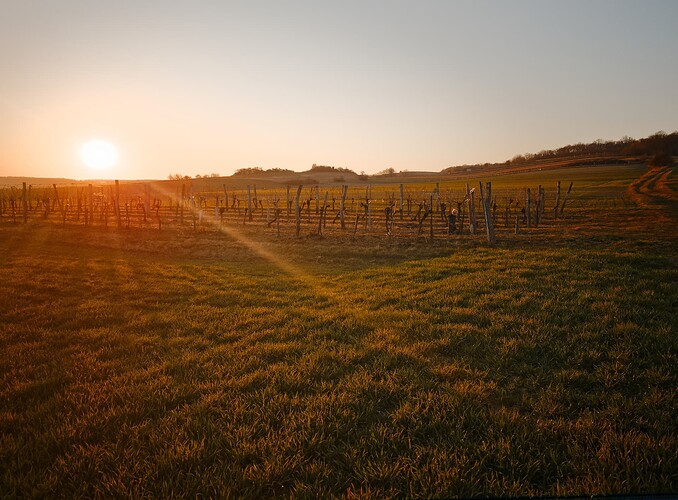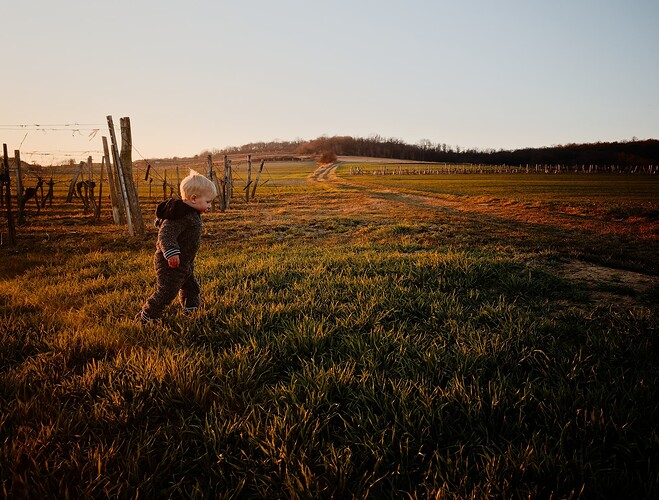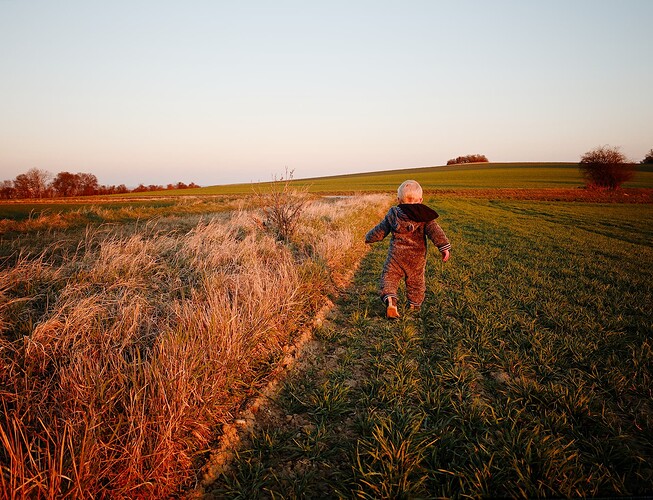Once again, people react and don’t read. I have clearly stated that there are scenarios where a “real” camera is needed/better. Maybe the foliage is one of those cases (or maybe you didn’t set the phonees ISO/Exposure/WB etc correctly). Here are a few scenarios where a phone did the job: https://www.theclickcommunity.com/blog/mobile-photography-36-amazing-photos-taken-cell-phone/
Fully agree its stuped you can use jpeg with the restrictions of that format but not the DNS that has more flexibility when editing.
For the few living in denial: Are these great photos or not ?? There’s even some good foliage.
more:
https://www.theclickcommunity.com/blog/mobile-photography-36-amazing-photos-taken-cell-phone/
Even with an old phone (pre-2015): https://www.huffpost.com/entry/sony-world-photography-awards_n_6976552/amp
from a 2010 iPhone !!: https://www.flickr.com/photos/flickr/galleries/72157644100931123/
Photography is about a lot more the mere image quality and pixels. On a small screen, good photo is a good photo, hard to tell the difference in most cases. Although there are genres of photography where you simply can’t take smartphone photos of any merit. Wildlife photography or sports photography when shooting fast action at high speed. You simply cannot take multiple shots to stitch it together and you have to shoot at high ISO to freeze action at appropriate shutter speed. It can work for so called HDR photos with static frames , it can help stabilize handheld shots etc. But when you need to get demanding shots with one frame, smartphones are simply not an option.
Which is another problem with the story about comparing shots you posted with dedicated comparing. As you might notice, the shots are mostly static shots or static scenes, usually shot with wide angle lenses and usually posted as low res social media or forum posts. I would not argue that smartphones can take photos for that purpose that won’t lose much comparing them to dedicated cameras. But photography has many genres and all things being equal they are not.
Also if you need to do larger prints or compositing work, you need extra resolution. You need extra resolving power. You can zoom in to any of these shots if you actually had original shots and see that they look like garbage when seen up close and personal, because they simply do not have the resolving power of larger sensor and lens combo, nor do they have dedicated lenses for optical reach you need for many types of photos. Try to shoot birds in flight or polar bears from half a mile away and see how it goes. Or try to do flash photography or shoot high action sports. Even if you post small pictures online where resolution is not visible differentiation, the hardware simply won’t allow you to take certain types of photos.
Comparing smartphones for photography with dedicated cameras, is not really a comparison. one can compliment the other. Smaller is easier to carry, less effort to shoot with, sometimes less expensive etc. Easier to share images from the device or even do rudimentary changes to the photos. But there is a lot more to photography than you have shown in these links and for that you need dedicated tools. Speaking of dedicated tools. If you are going to specialize in particular kind of photography, you need particular kind of tools. You may not need a tripod for wedding photography or photojournalism, but you will need one for landscape photography or wildlife. You may need only wide to mid range lenses for street photography, but you will definitely need telephoto lenses for fast action like sports and wildlife. You may not need dedicated camera for casual timelaplse but if you do it professionally you will need pro level tools. Also there are plenty of accessories and dedicated post production workflows that simply cannot work with smartphones we have today.
All of this is off course related to photo, but since most also shoot video, quickly you find much wider gap between the smartphones and dedicated hybrid cameras and accessories.
To claim one camera is the same a another is absurd, and even more absurd it to claim that smartphones make “indistinguishable” images compare to dedicated cameras. You can replicate some of types of photos based on composition, lighting and gesture and you can post them as low rest samples online and people probably won’t notice the difference. But there are quite a few limitations of what kind of photos you can take with smartphone, there is limitation with lenses, which is why almost all of the examples you have shown are wide to mid range shots and almost no close ups with with a dedicated portrait lens (portrait artificial bokeh system is not that good yet to fake it convincingly) or telephoto lenses.
You can’t compress the elements in your frame with a crop or digital zoom, you can only do that either by compositing in post which is not really an option or by using dedicated telephoto lens.
The threat was started about RAW files from smartphones. If you actually worked on these RAW files you will notice that they lack signal to noise ratio, they lack color fidelity at higher ISO values, they lack the dynamic range. Some of that is compensated with computational photography in the phone , but you don’t get RAW for that, you get many frames of small resolution combined in phone to produce higher dynamic range image with cleaner results. It also compensates for handheld shakes. And since all smartphone cameras have electronic shutter, you also have to worry about rolling shutter. Some of the Sony phones I think have stack sensors, but most don’t. Hence you will get jello effect with fast moving subjects.
You take a low end mirrorless camera such as some prosumer MFT sensor vs something like Sony A1 full frame or Nikon Z9 and you will deal with many of the pros and cons you have when you shoot with smartphones vs dedicated cameras. My point is that your premise of “indistinguishable” is a false premise. Every tool is not for every job and good user, providing he has the luxury of choice, would pick the best tool for the job. You won’t take Sony A1 camera to take pictures of your dog on a lazy Sunday after noon or walk at the beach with your family. You also won’t take your smartphone and only your smartphone to go shoot Olympics or got to the trip to Antarctica to make that cover shoot for National Geographic, will you? And you won’t be selling fine art large prints at a thousand dollars a pop, because your Samsung smartphone has 200MP sensor.
The OP has made his case for DxO PL support (at some level) for smartphone RAW files. Add HEIC, ProRaw, and all flavors of DNG. As others have pointed out, support for these have all been frequently requested. DxO is stubborn, secretive, and will do as it pleases. So be it. I accept that and, in the meantime, look for workarounds.
Anyone doubting the results achievable now using smartphones, especially with ProRaw, should see what Austin Mann (and others) are doing.
https://www.austinmann.com/trek
Computational imaging has made possible the advanced space telescopes and numerous advances in scientific and medical imaging, otherwise impossible to achieve. Computational photography is the future.
In the specific case of ProRaw, Apple, Adobe, and a couple of app developers have been in bed for a long time. They are way ahead of DxO PL which, in my opinion has already missed the boat. DxO probably cannot and won’t compete at this point, but it could accommodate.
This thread has gotten far off the original post. I want PL6 to accept my RAWS. It would be acceptable if DxO said: “Here, you can load your RAWS and process, but you will have to make the optics corrections yourself because we don’t have the resources (or desire) to calibrate for your phone.”
The ability to load a RAW would be a no-brainer service for them to provide.
Instead DxO says, Sorry, out of luck go process somewhere else."
Absolutely ! You summed it up very well eriepa.
I have read the review and look at the examples of Journal — Travel Photographer - Austin Mann you posted. It all looks good until you zoom in, as it is shown by one of the commentators in this time. Any 1" RX camera from Sony that costs comparable to iPhone will blow it out of water in terms of image quality and usability for photography. Sony RX100 serious is pocket size, so its portable about as smartphone. DXO support the RAW and quality is a lot better for roughly the same price or lower. My point is that this review and arguments for using smartphones for something that they are not meant to do, is more for promoting the brands and sponsors than best tool for job such as taking pictures during hiking trip and putting this much effort into it.
Here is price argument.
iPhone 14 Pro 128GB $999 (cheapest version)
Sony RX100 IV 20.1 MP Premium Compact Digital Camera w/ 1-inch Sensor, 4K Movies and 40x Super Slow Motion HD DSCRX100M4/B $799.99
Sony RX100 VI 20.1 MP Premium Compact Digital Camera w/ 1-inch sensor, 24-200mm ZEISS zoom lens and pop-up OLED EVF $1,198
Sony Cyber‑Shot RX10 IV with 0.03 Second Auto-Focus & 25x Optical Zoom (DSC-RX10M4) $985
I’m sorry, but there is no smartphone that can compare in terms of image quality with these cameras or optical lens capability. Trying to use smartphone for this kind of photography is more a fashion statement than practical use. It simply is not the best tool for the job. Smartphones at the high end cost more than many entry level cameras and while capable as media consumption devices, communication devices and even to some extent as media creation devices, they are not a replacement for dedicated camera. Too many compromises. They can be a great compliment to a dedicated camera, they can be great for social media content creation, God knows we have more than enough selfies and snapshots of food. But for many types of professional image making jobs, smartphones is a tool, but its not a replacement tool. And I doubt it will be in any foreseeable future. No matter how much the improve processing power and computational photography, there are some images it simply does not have the hardware for. Reason why people want to use smartphones for photography is not its ability to produce better results, its the convenience of use. If that is the argument you want to make, I agree. But quality of images, in terms of objective metrics, no.
I hear Sony, they also make iPhone sensor, are working on some kind of new generation sensor for smartphones. Lets see if that can be a new leap in what it can be done. For now, the hardware limitation do to physics of size of lenses and size of light gathering photo-sites, some things smartphones cannot do. And it cannot be compensates with computational photography , because it needs original data to make up the rest and said limitations prevent it.
I would like to hear someone from DXO team to comment on this, because there are probably issues we are not aware off. Patents, copyright, source code etc. Also Apple and Adobe are huge companies that have resources a company like DXO simply does not have. Considering that only now, Adobe has added AI noise reduction, clearly there are priorities that companies follow that do not depend on forum comments.
Does anyone else remember when we used to use mobile phones to make phone calls?
Phones with wire were the last time we were free.
Times have changed. Modern smartphones are misnamed. They are digital Swiss Army knives with hundreds of potential features. One is a built in app that allows users to make phone calls and another app uses built in camera hardware.
Considering that more people seem to use them as cameras than as a phones these days, perhaps they should be renamed smartcameras instead. I use my “smartphone” all the time for a hundred different tasks, but only occasionally to make phone calls and even less often as a camera.
For most, digital tasks, It augments and often replaces my desktop computer. I do some of my banking on my smartphone, I purchase from Amazon on my smartphone, I read the news on my smartphone, I use the GPS from my smartphone, I do measurement conversions on my smartphone, I use it to control other electronic devices, I use it to browse the internet, and I use it to post to various websites as I am going right now. I even use it to read and edit Microsoft Word documents and Excel spreadsheets, although the small screen makes those tasks less than optimal.
The other tasks I use it for are far too numerous to mention. But an extremely minor function for me is using it as a camera. ![]() I mostly use my phone’s camera when shopping in stores, or to capture an image as a memory jogger for later, or occasionally to capture some one-off event that I happen to come across. For all these purposes, straight out of camera HDR JPEG images from my Samsung. Galaxy S21 camera are more than sufficient for my purposes. I would not shoot in raw on my phone even if PhotoLab supported those files. However, I do understand that other people use their phone cameras very differently.
I mostly use my phone’s camera when shopping in stores, or to capture an image as a memory jogger for later, or occasionally to capture some one-off event that I happen to come across. For all these purposes, straight out of camera HDR JPEG images from my Samsung. Galaxy S21 camera are more than sufficient for my purposes. I would not shoot in raw on my phone even if PhotoLab supported those files. However, I do understand that other people use their phone cameras very differently.
Mark
Not sure who you are arguing with here, if anyone. I’ll not be selling my Leica Q anytime soon if that’s what you think. Austin Mann’s is a demo of the capabilities of an advanced iPhone and ProRaw. Pretty impressive I’d say, and more than good enough for internet use.
The original poster made this comment…
This was than talked about again on few posts in the threat implying that somehow the smartphones are good enough as dedicated cameras or good as replacements. I beg the differ. That’s all.
I disagree.
I agree.
A waste of time…you could be taking photos ! ![]()
Who says I didn’t, hehe. After all that is how I know what I know. By taking a lot of photos. And working with a lot of photos taken by other people. But, yeah, fun discussion. Will DXO support your request? I don’t know. I personally think its not their priority for reasons I listed, although I’m sure DXO team has other reasons we are not aware off as well. In my view, there are more pressing things DXO team could invest their time and money than to support all the smartphone RAW files, but if they do, I won’t complain. I do complain about arguments regarding smartphones being as good as dedicated cameras in terms of image quality. I stand by that.
@eriepa, you’re absolutely right. I even shared some careful tests with two iPhone 11 Pro DNG images developed in PhotoLab 5, Iridient Developer and Affinity Photo. The PhotoLab 5 versions were head and shoulders above what the other two programs could manage (I’m expert in PhotoLab and competent in all three).
Here’s the PhotoLab 5 versions for reference.
MSmithy at this point is vandalising this thread, making specious arguments that there’s no point in processing mobile phone photos. I too consider moving to other software to allow me to work on my RAW photos in a single tool. I do not want to have one RAW processor for mobile photos and another for SLR cameras.
I find it interesting that the foliage is very dark and/or against a blown out sky in every shot it appears in.
I think a lot of the “amazing photos” posts centre on “photography as art” rather than “the world as art”.
The foliage issue I referred to was a picture of a small lake backed by a steep hillside covered in rich forest. The foliage is the subject. It looks beautiful in person. The phone simply doesn’t cope.
Yes, the phone will be outclassed by dedicated cameras in “certain situations” but I find most situations I want to capture are ones where the phone is outclassed.
If anyone finds the opposite, then I am happy for you and I refer you to the many, many other software products that will let you process those photos. I use PhotoLab because of its selling point of brilliantly decoding Bayer matrices (yes, and X-Trans) of higher end cameras.
Like all software companies.
Which is why I despair of the type of thread title here. Request support, but there is no need to besmirch their decision making.
Not sure why you are using me as your “strawman” by taking a snippet of my post out of context. The complete quote follows.
“DxO is stubborn, secretive, and will do as it pleases. So be it. I accept that and, in the meantime, look for workarounds.”
This statement is not besmirching DxO’s business decision. Despair not.
Apologies, the besmirching is in the thread title, along with various other posts along the same lines.



